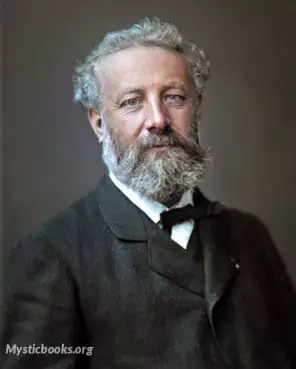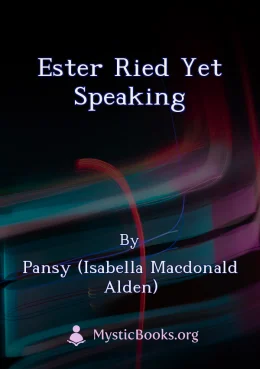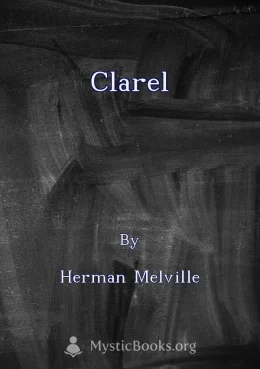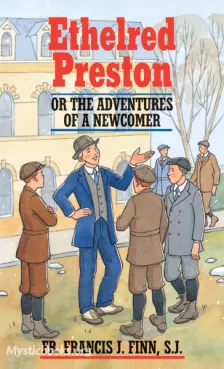
A Journey to the Interior of the Earth
by Jules Verne
'A Journey to the Interior of the Earth' Summary
The story begins in May 1863, at the Lidenbrock house in Hamburg, Germany. Professor Otto Lidenbrock dashes home to peruse his latest antiquarian purchase, an original runic manuscript of an Icelandic saga written by Snorre Sturluson, "Heimskringla", a chronicle of the Norwegian kings who ruled over Iceland. While leafing through the book, Lidenbrock and his nephew Axel find a coded note written in runic script along with the name of a 16th century Icelandic alchemist, Arne Saknussemm. (This novel was Verne's first to showcase his love of cryptography; coded, cryptic, or incomplete messages would appear as plot devices in many of his works, and Verne would take pains to explain not only the code itself but also the mechanisms for retrieving the original text.) Lidenbrock and Axel transliterate the runic characters into Latin letters, revealing a message written in a seemingly bizarre code. Lidenbrock deduces that the message is a transposition cipher, but achieves results no more meaningful than the baffling original.
Professor Lidenbrock locks everyone in the house and forces himself, Axel, and Martha the maid to go without food until he cracks the code. Axel discovers the answer when fanning himself with the deciphered text: Lidenbrock's deciphering was correct but simply needed to be read backward in order to reveal a paragraph written in rough Latin.[a] Axel tries to hide his discovery from Lidenbrock, afraid of the professor's maniacal reactions, but after two days without food, he knuckles under and reveals the secret to his uncle. Lidenbrock translates the paragraph, a 16th century note written by Saknussemm, who claims to have discovered a passage to the center of the earth via the crater of Snæfellsjökull in Iceland. In what Axel calls bastardized Latin, the deciphered message reads:
In Sneffels Yokulis craterem kem delibat umbra Scartaris Julii intra calendas descende, audas viator, et terrestre centrum attinges. Kod feci. Arne Saknussemm.
which, when translated into English, reads:
Go down into the crater of Snaefells Jökull, which Scartaris's shadow caresses just before the calends of July, O daring traveler, and you'll make it to the center of the earth. I've done so. Arne Saknussemm
Book Details
Language
EnglishOriginal Language
FrenchPublished In
1864Genre/Category
Tags/Keywords
Authors

Jules Verne
France
Verne is considered to be an important author in France and most of Europe, where he has had a wide influence on the literary avant-garde and on surrealism. His reputation was markedly different in an...
Books by Jules VerneDownload eBooks
Listen/Download Audiobook
Related books

His Wisdom, the Defender: A Story by Simon Newcomb
It tells the story of a young man named John Marbury, who seeks to defend his faith against the skepticism and doubt of the scientific community. Set...

From Jest to Earnest by Edward P. Roe
Will Harold Harcourt ever find true love and purpose, or will his life of jesting and frivolity lead him to ruin? From Jest to Earnest is a heartwarm...

Ester Ried Yet Speaking by Pansy (Isabella Macdonald Alden)
In "Ester Ried Yet Speaking," the author explores themes of faith and social reform through the story of Alfred Ried, a young man who desires to help...

Clarel by Herman Melville
Clarel is an epic poem by Herman Melville that follows the journey of a young American, Clarel, to the Holy Land. The poem explores themes of faith, d...

Outcast by William Winwood Reade
The Outcast follows an anonymous letter writer grappling with the seismic shift in understanding the world brought about by the scientific discoveries...

Christmas Carol by Charles Kingsley
Charles Kingsley's *A Christmas Carol* is a Victorian-era novella that explores themes of social justice, redemption, and the true spirit of Christmas...

Come Rack! Come Rope! by Robert Hugh Benson
Set in Elizabethan England, 'Come Rack! Come Rope!' follows the story of two young lovers who are forced to confront the persecution of Catholics. Fac...

Book of Judith by King James Version
The Book of Judith recounts the story of a Jewish widow named Judith, who uses her beauty and strategic cunning to defeat the Assyrian general Holofer...

Ethelred Preston; or, The Adventures of a Newcomer by Francis J. Finn, S.J.
The story follows the adventures of Ethelred Preston, a young boy who is sent to a Catholic boarding school after the death of his father. Ethelred st...

The Food of the Gods and How it Came to Earth by H. G. Wells
The Food of the Gods and How It Came to Earth is a science fiction novel by H. G. Wells, first published in 1904. Wells called it "a fantasia on the c...
Reviews for A Journey to the Interior of the Earth
No reviews posted or approved, yet...